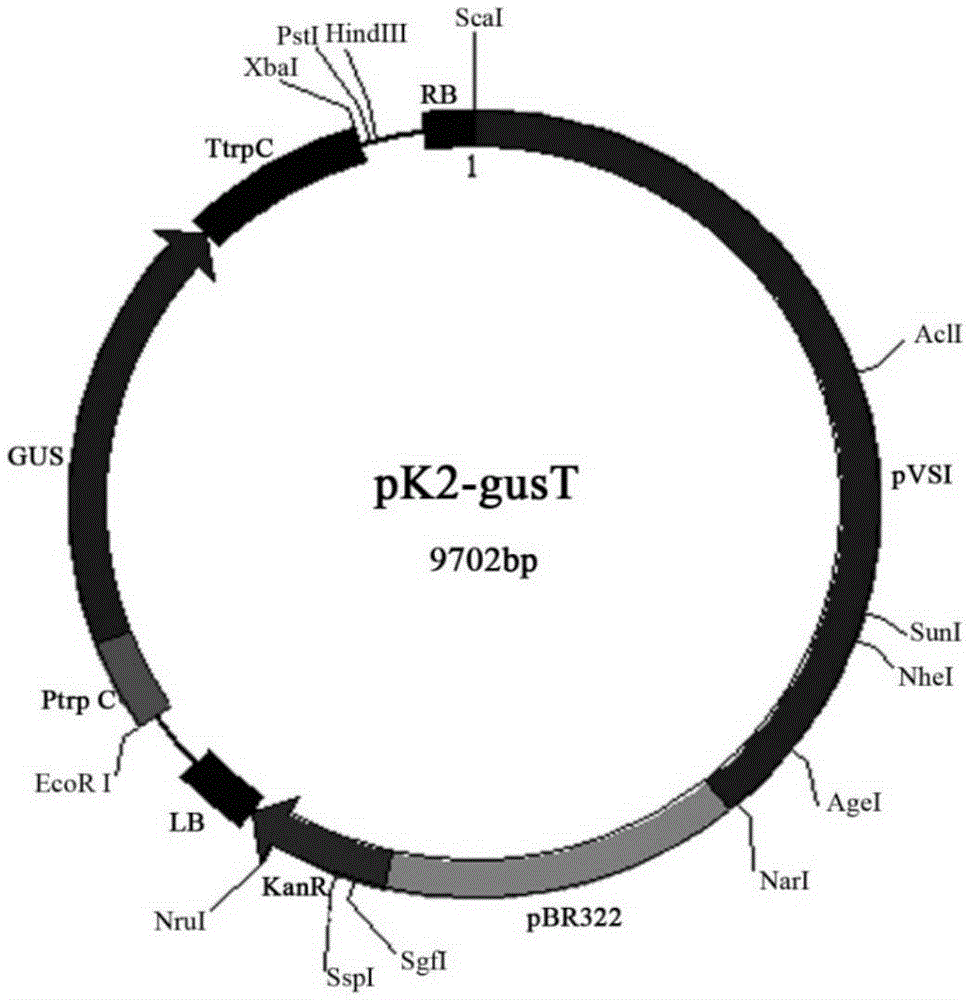Method for improving beauveria bassiana conidiospore yield and virulence by use of genetic manipulation
A technology of Beauveria bassiana and conidia, applied in the field of genetic engineering, can solve problems such as limiting the virulence of conidia, and achieve the effect of increasing yield and virulence
- Summary
- Abstract
- Description
- Claims
- Application Information
AI Technical Summary
Problems solved by technology
Method used
Image
Examples
Embodiment 1
[0033] 1. Destruction of the MIR domain coding region of Beauveria bassiana Pmt1 by homologous recombination
[0034] The strategy for constructing the homologous recombination expression vector of the MIR domain coding region of Beauveria bassiana Pmt1 is as follows: the partial coding region of the MIR domain of Pmt1 is replaced by the expression element of bar gene (SEQ ID NO.42). That is, the flanking sequences of Pmt1 are connected at both ends of the bar expression element to form a homologous recombination expression vector, which is introduced into Beauveria bassiana through genetic transformation, and the Pmt1 flanking sequences connected on both sides of the vector and the homologous sequence in the genome of Beauveria bassiana Perform double exchange to replace part of the coding region (349bp) of the MIR domain of Pmt1 to achieve the purpose of destroying the coding region of the target domain (such as figure 2 Shown in A), wherein, the gene sequence of the MIR dom...
Embodiment 2
[0063] 1. Domain analysis of Pmt1 protein
[0064] Pmt1 protein domain analysis using NCBI website ( http: / / www.ncbi.nlm.nih.gov / ) in the blastp program. The membrane-penetrating structure of Pmt1 protein was predicted by TMAP and TMPRED software and the prediction method and analysis data of yeast Pmts (Strahl-Bolsinger and Scheinost, 1999, J. Biol. Chem., 274:9068-9075).
[0065] Domain analysis showed that Pmt1 was composed of 902 amino acids, including a PMT (Dolichyl-phosphate-mannose-protein mannosyltransferase) domain and three MIR (DomaininryanodineandinositoltrisphosphatereceptorsandproteinO-mannosyltransferases) domains. Among them, the PMT domain is located at the 52nd to 298th amino acid of the amino terminal, and the three MIR domains are respectively located between the 329th-379th amino acid, the 404th-463th amino acid and the 478th-529th amino acid ( image 3 A). Four putative N-glycosylation sites (NX(S / T)) are located at amino acids 380-382, 393-395, 592...
Embodiment 3
[0085] 1. The effect of destroying the MIR domain coding region of Pmt1 on the growth of the strain
[0086] In order to reveal the relationship between the MIR domain of Pmt1 and the growth and development of Beauveria bassiana, comparative studies were carried out on complete medium PDA, basic medium Czapek-Doxagar and different carbon and nitrogen sources. The wild strain, mutant ΔMIR and Pmt1 reverted to the colony growth of the complementary transformants. The results showed that although there were differences in the growth rate of Beauveria bassiana in different media or under different nutritional conditions, the growth rate of the mutant ΔMIR was significantly decreased in most of the culture conditions compared with the wild strain and the recomplementation transformants . On PDA, Czapek-Doxagar and different nitrogen sources except glycine (Gly), the growth rate of the mutant ΔMIR decreased by 5.28%-11.94% compared with the wild strain (P Figure 4 ). On the medium...
PUM
 Login to View More
Login to View More Abstract
Description
Claims
Application Information
 Login to View More
Login to View More - R&D
- Intellectual Property
- Life Sciences
- Materials
- Tech Scout
- Unparalleled Data Quality
- Higher Quality Content
- 60% Fewer Hallucinations
Browse by: Latest US Patents, China's latest patents, Technical Efficacy Thesaurus, Application Domain, Technology Topic, Popular Technical Reports.
© 2025 PatSnap. All rights reserved.Legal|Privacy policy|Modern Slavery Act Transparency Statement|Sitemap|About US| Contact US: help@patsnap.com



